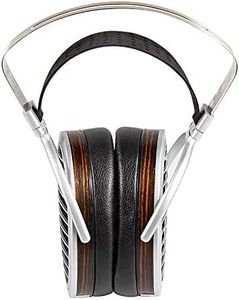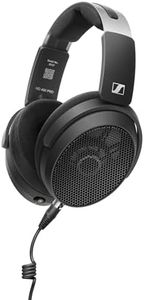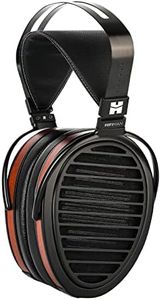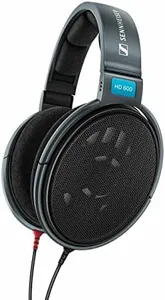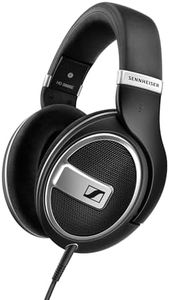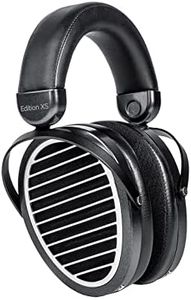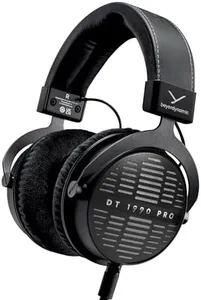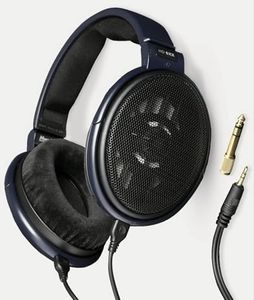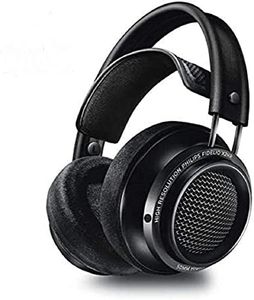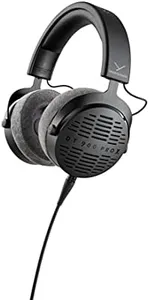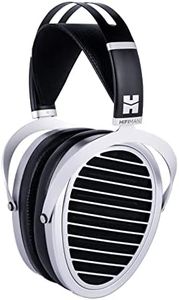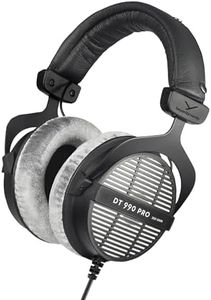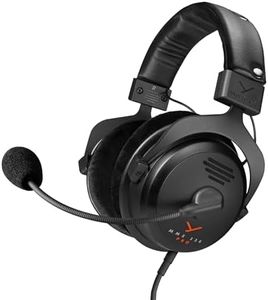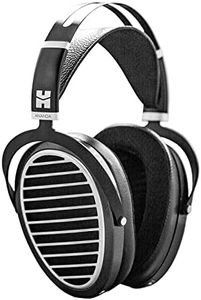We Use CookiesWe use cookies to enhance the security, performance,
functionality and for analytical and promotional activities. By continuing to browse this site you
are agreeing to our privacy policy
10 Best Open Back Headphones
From leading brands and best sellers available on the web.Buying Guide for the Best Open Back Headphones
Choosing open-back headphones is about finding the balance between audio quality, comfort, and how you plan to use them. Open-back designs offer a natural and spacious soundstage, making them popular with music lovers, gamers, and people who want a more immersive listening experience. However, they also let in outside noise and let your music leak out, which might not be suitable for all situations. Before you buy, consider where you'll use the headphones, what kind of music or audio you enjoy, and how important sound clarity is to you.SoundstageSoundstage refers to how wide and realistic the headphones make the audio seem, almost as if you're listening to speakers in a room instead of sound coming from right around your ears. Open-back headphones are known for offering a wider soundstage than closed-back models, which is great for genres like classical, jazz, or any music where you want to feel like you're 'in the performance.' If you care deeply about hearing details like instrument separation or you game and want to sense direction, a spacious soundstage is key. If you just want basic music playback or won’t notice subtle details, this might be less important.
Driver Size and TypeThe driver is the part that actually produces the sound, and its size and type affect the quality and power of what you hear. Larger drivers often offer deeper bass and can handle higher volumes without distortion, while smaller ones might focus the sound and be more lightweight. Some headphones use dynamic drivers, others use planar magnetic or electrostatic types, each with different sound characteristics. If you prefer deep, punchy music, larger drivers are a plus; if you want detailed, accurate listening, focus on driver quality and type rather than just size.
ImpedanceImpedance is a technical term that basically explains how much power the headphones need to work well. Low-impedance headphones (under 50 ohms) can easily be used with phones or laptops, but higher-impedance ones (above 80 ohms) often require stronger amplifiers for the best sound. If you’ll use your headphones primarily with portable devices, look for lower impedance. If you want the best sound possible and plan to connect to specialized audio equipment, higher impedance can offer more precision.
Comfort and FitComfort is really important, especially since open-back headphones are often used for long listening sessions at home. Look at factors like the padding on the ear cups, the materials used, how heavy the headphones are, and whether the design fits your head size well. If you spend hours at a time with headphones on, pick models with softer materials and lighter weight; for short sessions, you can be a bit less picky.
Build Quality and MaterialsThe overall build quality and the materials used in your headphones affect both durability and comfort. Metal frames are typically sturdier but heavier, while plastic ones are lighter and sometimes less robust. Earpad materials can be velour, leather, or foam, each with different feels and long-term comfort. If you want headphones that last years and can take some bumps, prioritize more robust materials; if portability or lightness is more important, pick accordingly.
Leakage and Noise IsolationOpen-back headphones naturally allow sound to pass through, meaning people nearby can hear what you're listening to and you’ll also hear the environment around you. If you plan to use them in quiet, private settings, this isn’t a problem—actually, it can be a plus for a more natural sound. If you’ll be around others or in noisy places, remember that both music leakage and outside noise intrusion could be an issue. Think about where you'll usually use the headphones to decide if open-back designs are for you.
